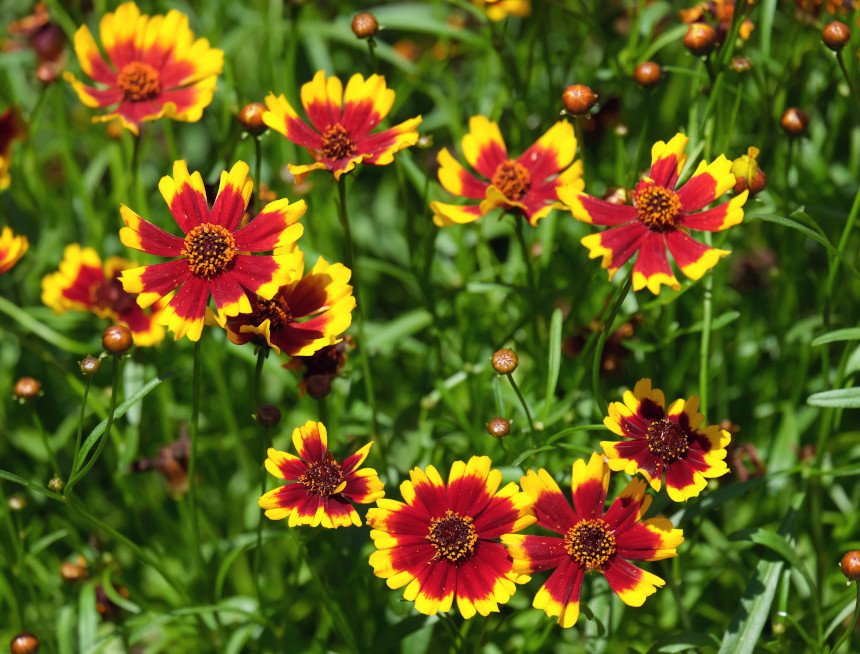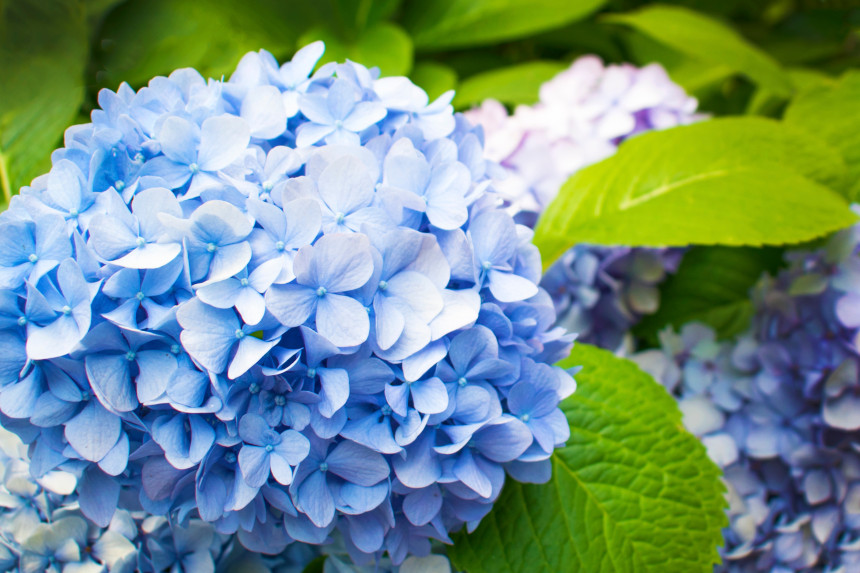Managing editor and logophile Andy Hollandbeck reveals the sometimes surprising roots of common English words and phrases. Remember: Etymology tells us where a word comes from, but not what it means today.
With constant news of COVID, updates on Olympic competitions, and the infinite minutiae of daily life, so many things are vying for our attention these days. It’s good to remind ourselves occasionally to stop and smell the roses.
Or maybe not smell exactly, but look at the history of the names of. And maybe not roses (a word whose derivation is ambiguous, but it’s probably related to the Greek word for the same flower — rhodon), but this little bouquet of summer-blooming flowers and flowering shrubs.
Coreopsis

The coreopsis gets its name from the appearance of its seeds: koris was the Greek word for “bedbug” (the K became a C in Latin), to which was added the Latin suffix -opsis “appearance.” Coreopsis seeds look like bugs.
I don’t know if mid-18th-century botanists were simply running out of ideas for names or what, because to my (admittedly untrained) eye, practically all seeds look like bugs. But coreopsis seeds must be particularly insectoid, because in the vernacular, the plants are also known as tickseed and tickweed. (I assume coreopsis is easier for a nursery to sell than tickweed.)
Daisy

Daisies (Flower_Garden / Shutterstock)
Though daisies originated in Europe and Asia, they can now be found on every continent but Antarctica. Their wide spread is due not only to human travel but also to their hardiness: They can survive in wet or dry climates, in sun or in shade, in the mountains or on the plains.
They also do something that other flowers don’t: As night falls, daisies close up their petals, only to bloom again at morning’s first light. People long ago noticed this peculiarity and likened the flower to an eye that closed at night to “sleep” and then “woke up” in the morning. They called them, in Old English, dægesege, or “day’s eye,” which developed into daisy.
Geranium

Geraniums sport long, thin seed pods that sometimes resemble tiny versions of the long bill of a crane, a connection that was not lost on early anthophiles. The Greek word for “crane” is geranos, to which was added a diminutive suffix, creating the plant name geranion, literally a “little crane,” which on its journey through Latin and into English, became our geranium.
Hydrangea

Native to China, the hydrangea was introduced to Europe in 1755. But even before that, Carl Linnaeus had coined a new name for the flowering shrub from Modern Latin. If you recognize hydr- as a word part indicating water (i.e., hydro), you’re partway there. The second part is from angeion, the Latin word for “vessel, capsule.” Linnaeus chose the word because the open seed pods looked like cups that could hold water.
The hydrangea is also called the hortensia, a name honoring Nicole-Reine Hortense Lepaute, a French astronomer and mathematician. It’s a fitting name for a flower, too, related as it is to hortus, the Latin word for “garden.”
Does this pique your interest in flower names further? Discover the history of the names daffodil, hyacinth, pansy, peony, and tulip in my earlier “An Anthology of Spring Flowers.” And discover the link between flowers and Roman gladiatorial games in “Gladiators with Gladioluses.”
Become a Saturday Evening Post member and enjoy unlimited access. Subscribe now




Comments
What a wonderful look at the origins of some beautiful flowers and how they got their names. Some how I missed the ‘gladiator’ connection feature. Thanks for the link.